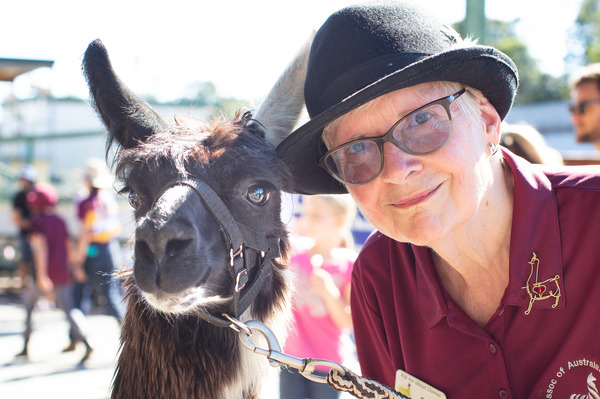By Margaret Maccoll
Llamas make not only wonderful pets and providers of fine wool they are effective guard animals capable of warding off wild dogs.
Syla Barns has kept llamas for about 25 years and said their placid natures made them easy to train, their soft padded feet meant they tred lightly on the ground without damaging it, an adult would provide about 3-4kg wool when shorn and their poo was good fertiliser for the garden.
In addition as a pack animal they made great picnic companions when it came to carrying the wine and cheese, she said.
Ms Barns said wild dogs were a considerable problem in the Eumundi Yandina region which she experienced first hand on her farm about six years ago.
At the time she had llamas in two paddocks and sheep in a third. One night without her or her husband hearing a sound dogs passed through both of the llama paddocks before reaching the sheep.
“About eight of the 12 sheep were killed,“ she said.
Since then sheep have been placed in the same paddocks as the llamas and there had been no further attacks, she said.
According to the Department of Agriculture and Fisheries management of wild dogs and declared feral species under the Biosecurity Act 2017 was primarily the responsibility of landholders but there was support from state and local governments.
Under its pest survey program Noosa Council undertakes a Biosecurity Surveillance Program on properties across the Shire in collaboration with landholders as well as a range of trapping and poison baiting programs.
The Sunshine Coast Council’s Prevention and Control Program targets wild dogs, feral pigs, feral goats, feral cats, feral deer, European foxes, European rabbits and Indian Myna birds. A spokeswoman said almost 700 requests for assistance with feral animal control were received annually.







